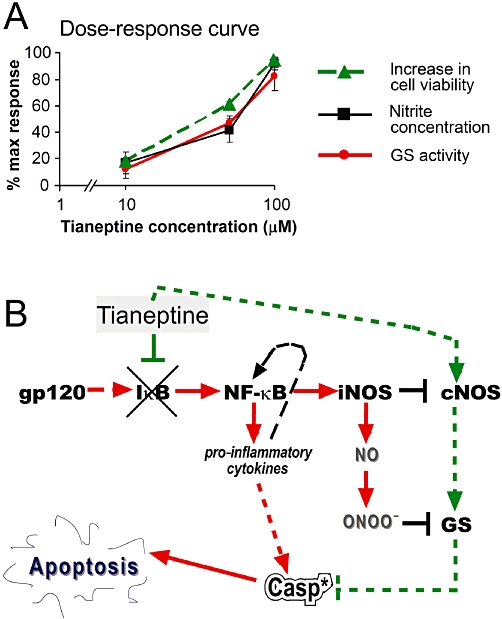Figure 5.

(A) Dose-response curve for effects of tianeptine on cell viability and enzyme activities counteracting pro-apoptotic effects of gp120. The response was calculated according to Figure 1 as the increase in cell viability (i.e. 100% – % trypan blue positive cells) compared with viability in the presence of 10 nM gp120. For glutamine synthase (GS) and nNOS activity (measured indirectly by nitrite concentration), the data from Figures 2A and 3A were recalculated, assuming that the gp120-induced suppressed activity corresponds to 0, while 100% activity corresponds to control untreated cells. Note that GS activity and nitrite levels are superimposable. (B) The schematic representation of molecular mechanisms induced by tianeptine. The primary effect of tianeptine may involve the block of gp120-induced cNOS down-regulation and IκB-α degradation. This may prevent the induction of iNOS and decrease in cNOS levels, thus stabilizing low physiological NO levels, which finally increase GS activity. High GS activity is fundamental for protection from apoptosis. Inhibition of NF-κB by tianeptine may attenuate other pro-inflammatory responses to gp120 comprising an increased production of pro-inflammatory cytokines. *, activated caspase-3.
